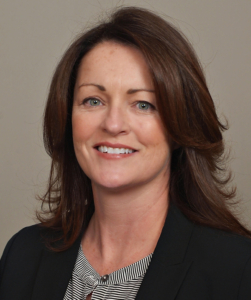By Jill Rosenthal, Vice President of Payment Operations, MineralTree
Supply chain shortages caused by the pandemic have underscored just how critical vendor relationships are to the health of companies. In MineralTree’s seventh annual State of AP 2022 report, 71% of finance leaders say that these relationships have grown in importance over the last year – a 12 percentage point jump from 2021. They know what happens when the products and parts needed to fuel their businesses are in short supply and are focused on strengthening vendor relationships to keep access to these critical goods flowing.

Businesses focus a lot on what customers want, as they should. But to keep their supply chains moving, finance leaders also need to have a deep understanding of what their vendors want. We surveyed vendors about their concerns and what motivates them in the State of AP report, and in the process, we uncovered misperceptions between AP teams and vendors that are getting in the way of better relations. That knowledge, along with the right tools and services, can enable AP teams to effectively deliver on their vendors’ needs, and ensure the availability of business-critical goods and supplies.
Six requirements for improving vendor relations
Based on insights from the survey, we identified six key ways AP can address vendor needs:
1. Get in the vendor mindset.
Consider the payment relationship from the vendors’ point of view. They depend on steady cash inflow to purchase materials and fund production. Pandemic-initiated supply chain volatility has caused difficulties for vendors too, negatively impacting payments and, ultimately, cash flow. In the survey, 83% of finance leaders reported that supply chain issues have caused delays and issues in invoice processing, payments and reconciliation.
2. Understand their wish list and pain points.
In the survey, vendors understandably cited fast payment as the most important consideration in the payment experience (84%). This was followed by accurate payment (67%), processing cost (52%), quality of remittance data (46%), responsiveness to inquiries (42%), and having their payment preferences respected (33%).

The top pain point for vendors is the time and effort it takes to follow up on invoices and payment inquiries; only 56% of them said that AP teams respond in a prompt and satisfactory manner. Other areas of frustration include reconciling payments, processing payments and updating payment preferences and details.
3. Find out how they want to get paid.
With prompt payment leading vendors’ wish list, it’s important to identify how they want to get paid. The vast majority (82%) want to receive more e-payments, such as ACH and virtual cards. Vendors realize the benefits that e-payments provide, which, in addition to more timely payments (85%), include processing efficiency (79%), improved remittance (44%), cost savings (39%), increased security and fraud protection (38%).
Similarly, finance leaders are interested in the advantages that e-payments offer, including time savings (77%), especially considering the time-consuming nature of manual check processing and the difficulty staffing. AP teams also want the benefits of prompt payments (63%), cost savings (57%) and increased security and fraud protection (49%), among others.
4. Identify the roadblocks.
What’s holding AP teams back from fulfilling vendors’ desire for faster payments? Ironically, the top obstacle impeding e-payment adoption is the misperception of both buyers and suppliers that the other party isn’t interested. As evidence of this “blame game,” 57% of finance leaders say vendors are unwilling to accept e-payments, while 63% of vendors claim that it is the other way around, with AP unwilling to move away from checks.
There are other barriers as well. With lean AP staffing, bandwidth for contacting and enrolling vendors in e-payments is a major impediment to adoption for 40% of finance leaders. Some solution providers offer managed services, enabling AP teams to offload these tasks along with responding to vendor inquiries about payment.

5. Overcome those obstacles.
Fortunately, finance leaders can address vendors’ wishes for faster, more accurate payments by automating their AP process and taking advantage of e-payments. Finance teams can save a tremendous amount of time and cost by digitizing the labor-intensive tasks of invoice processing, which includes entering, coding and matching invoice data; routing invoices for approval; and managing workflow. Similarly, on the payment side, automation drastically speeds up payment timelines, particularly compared to the process of preparing checks, getting signatures, and stuffing, sealing and mailing them – as well as time it takes for the post office to deliver the payments.
6. Increase payment visibility and efficiency.
When it comes to payment inquiries, a faster, more streamlined process will automatically reduce the number of vendors checking on the status of their payments. Many AP teams are relying on managed services from their AP automation vendor to handle incoming payment inquiries from vendors, generating additional time savings while ensuring suppliers get prompt answers.
Understanding vendors and accommodating their payment needs will go a long way in helping companies strengthen these critical relationships and gain consistent access to the goods and materials they need to run their businesses. It’s a win-win proposition. Not only will it make their vendors happier, but it will also enable companies to streamline costs, gain efficiencies and effectively weather all types of market conditions.
About the Author

Jill Rosenthal is Vice President of Payment Operations for MineralTree, a company focused on creating frictionless accounts payable (AP) and payment processes. In her role, she leads the teams responsible for optimizing customers’ payments and providing value to their vendors. She has spent over 20 years in the payments industry. Prior to MineralTree, Jill spent 14 years at JPMorgan where she held leadership and strategy roles in their commercial payments business.
More PaymentsNEXT news:
Alternative credit data and the future of credit scoring
5 Digital Payment Trends for Small Businesses








LET’S CONNECT